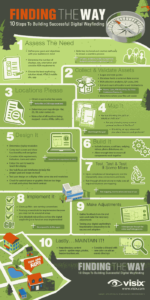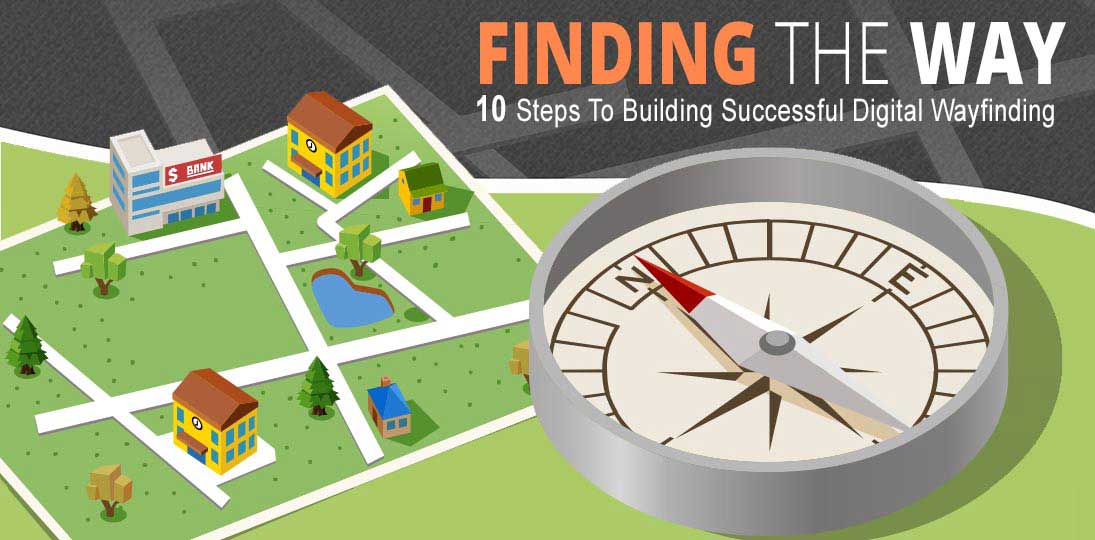Interactive wayfinding is an amazing tool that businesses, hospitals and universities use to improve the visitor experience at their facilities. However, successful digital wayfinding requires careful planning. You’ll want to think about what your audience needs, and the most effective way to deliver it:
Get the right team together
Make sure that all of your stakeholders agree on your wayfinding needs, and keep everyone in the loop throughout the process. You’ll need to include both technical and creative staff.
Determine your goals
As always, keep the audience in mind. The point of all good wayfinding is to improve the visitor experience. At this point, you can start choosing the best wayfinding option.
Define your audience(s)
If you don’t know who you’re making your wayfinding for, you can’t work to their preferences for design and navigation. Older folks might need zoom features or larger fonts, whereas younger audiences might appreciate a map download with a QR code or SMS directions.
Quantify your displays
Walk your facility and identify the natural places for wayfinding. Look at traffic patterns, bottlenecks and entry points. Don’t ignore “desire paths”, which are the paths people are already using.
Gather your maps and assets
You probably have maps available from your architect or facility manager. Your marketing team will be able to provide you with logos and brand standards.
Choose a design style
Should your maps be 2D or 3D? Which colors will work best? You’ll need to determine the graphic design as well as navigation options like directories, events, floor and campus maps.
Think about ADA regulations
Text size, icons, legends and navigation buttons – all of these need to be considered. Also, if you want to offer touchless interactivity, you can look at QR codes or voice-activated wayfinding.
Implement and test
You’ll need to thoroughly test every interactive feature and double-check your recommended routes. And once you launch your wayfinding, you’re not done. Keep testing and get user feedback.
If you’d like more information about our interactive wayfinding, contact us. In the meantime, download our infographic to get started building your own successful digital wayfinding:

Want more detail on building successful interactive wayfinding designs? Read our white paper.
